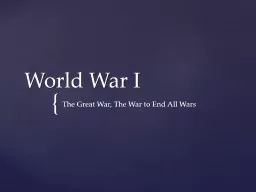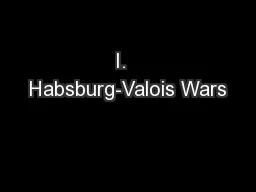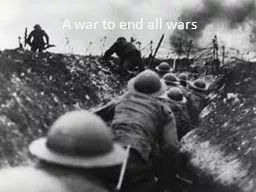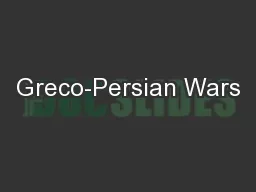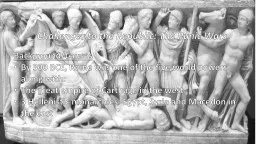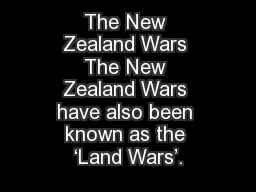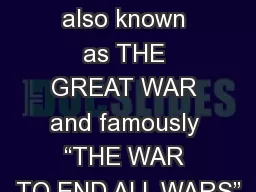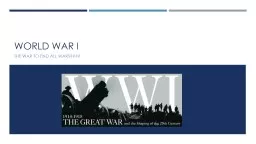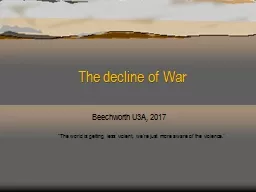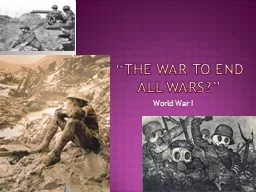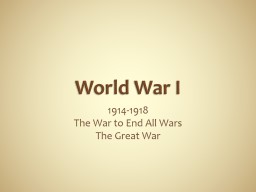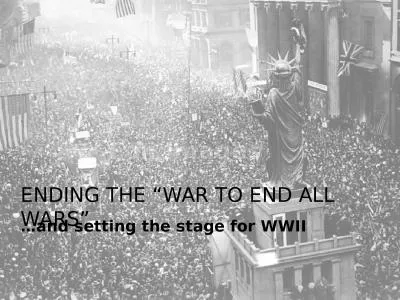PPT-World War I The Great War, The War to End All Wars
Author : sherrill-nordquist | Published Date : 2018-11-01
M Militarism Fascination with war and a strong military A Alliances Agreements among varying nations to help each other out I Imperialism Building empires
Presentation Embed Code
Download Presentation
Download Presentation The PPT/PDF document "World War I The Great War, The War to En..." is the property of its rightful owner. Permission is granted to download and print the materials on this website for personal, non-commercial use only, and to display it on your personal computer provided you do not modify the materials and that you retain all copyright notices contained in the materials. By downloading content from our website, you accept the terms of this agreement.
World War I The Great War, The War to End All Wars: Transcript
Download Rules Of Document
"World War I The Great War, The War to End All Wars"The content belongs to its owner. You may download and print it for personal use, without modification, and keep all copyright notices. By downloading, you agree to these terms.
Related Documents

